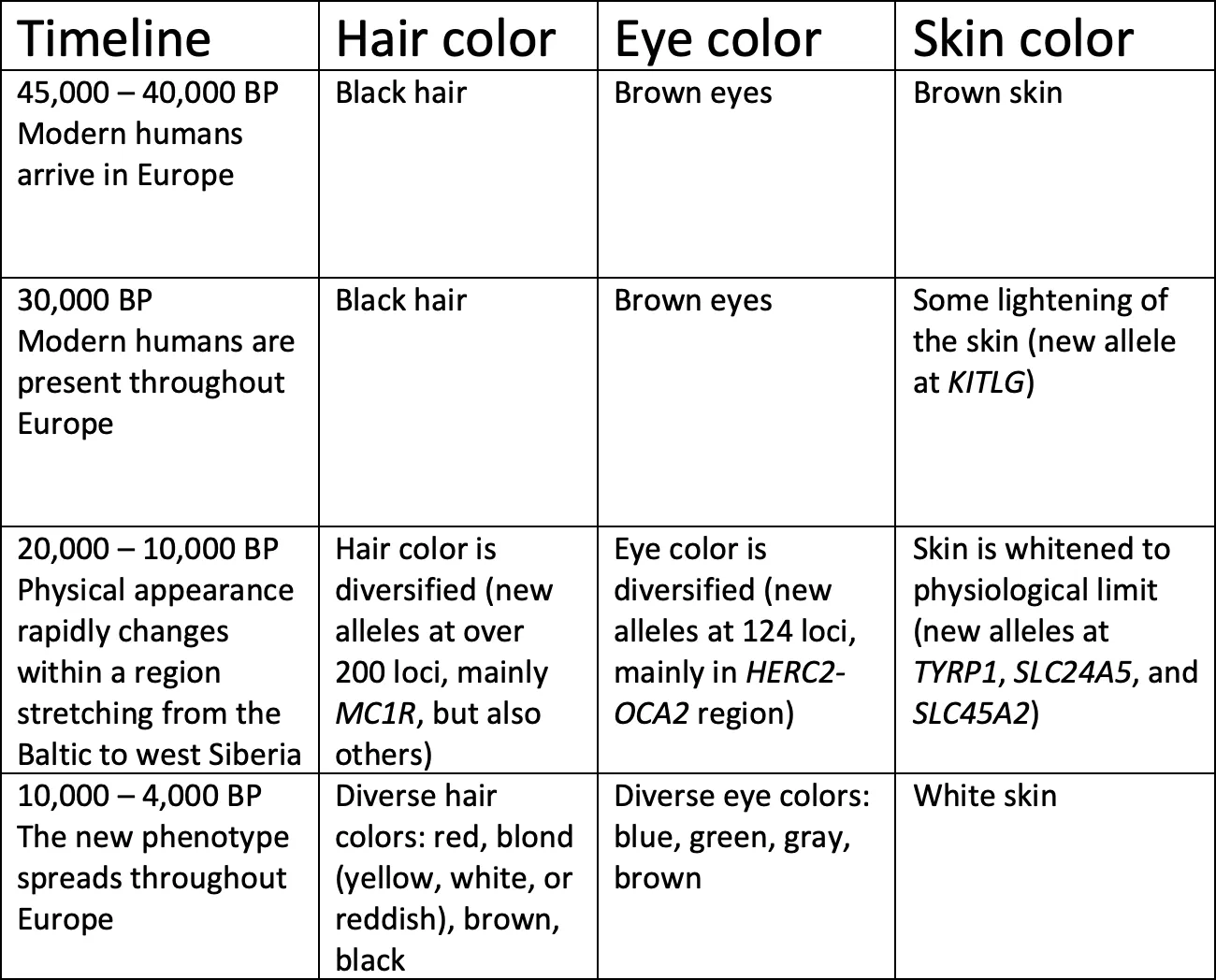I have seen similar essays by Peter Frost for years - it seems to be a main focus of his research - but I don't believe I have ever posted it. Recent Evolution of Hair, Eye, and Skin Color In Europe.
The emergence of diverse coloration in Europe is recent. Frost believes it is due to sexual selection, not the commonly-maintained idea that it has to do with sunlight at higher latitudes and Vitamin D.
European hair and eye colors get attention not only through their brightness and purity but also through their diversity – they come in many hues. Sexual selection is known to create color polymorphisms as a means to maximize the “novelty effect.” A color can get attention simply by being rare. When an attractive color becomes more frequent in a population through generations of sexual selection, it loses some of its novelty and, hence, some of its attractiveness. The pressure of selection then shifts to less frequent colors, including those that have recently appeared through mutation. Thus, over successive generations, the population will accumulate more and more color variants.
He notes that some of the changes are estrogen-mediated, and gives support for the theory that color change to more arresting colors in other species is usually related to mate attraction for both males and females.

3 comments:
The pace of revision in the pre-historic settlement of Europe is fascinating. For years it seems that every time I turned around another branch of the race was discovered and more mysteries were unleashed.
You will be happy to know that for the first time, notification of your comment to my email did not go to spam. After years of me hitting "not spam" it finally believed me.
Well I'm generally late and still like to fire off a comment. I suspect it's genetic. I come from the kind of stock that would fire off a letter to The Times 3 months late about spotting the first robin of Spring.
Post a Comment